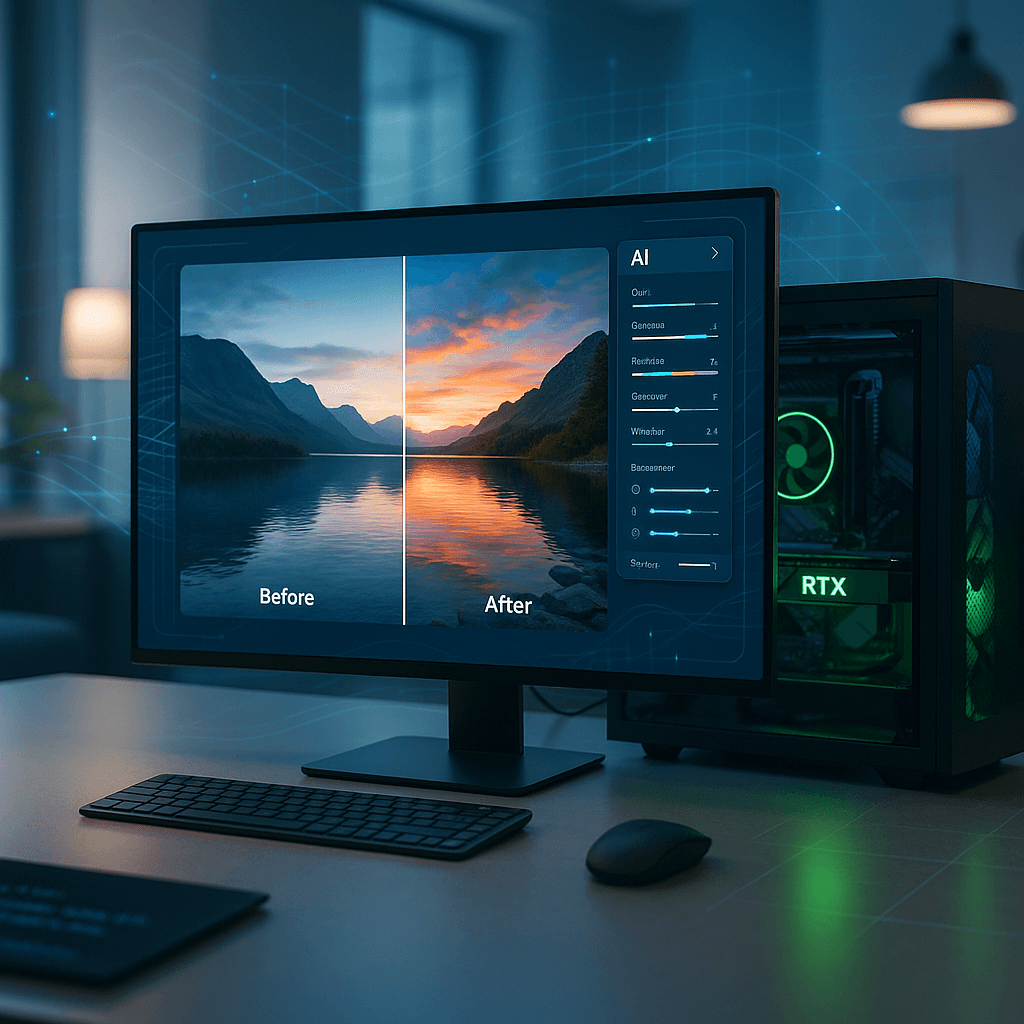TL;DR:
• NVIDIA launches FLUX.1 Kontext as plug-and-play NIM microservice for RTX PCs
• Model compressed from 24GB to 7GB while delivering 2x performance boost via TensorRT optimization
• Simple text-to-edit functionality eliminates need for fine-tuning or complex AI workflows
• Available through ComfyUI with one-click deployment targeting mainstream developer adoption
NVIDIA just made high-end image editing AI accessible to mainstream developers. The company released Black Forest Labs' FLUX.1 Kontext model as a NIM microservice, bringing professional-grade AI image editing to RTX-powered PCs without the complexity of traditional deployment. This marks a significant democratization of enterprise-level generative AI tools, potentially reshaping how creators and developers approach image manipulation workflows.
NVIDIA just turbocharged the AI image editing landscape by packaging Black Forest Labs' cutting-edge FLUX.1 Kontext model into a ready-to-deploy microservice. The move signals NVIDIA's aggressive push to democratize enterprise AI tools, making sophisticated image manipulation accessible to developers without PhD-level AI expertise.
[embedded image: FLUX.1 generated bird transformation showing before/after editing capabilities]
The timing couldn't be more strategic. While competitors scramble to match OpenAI's DALL-E and Midjourney's creative prowess, NVIDIA is betting on a different approach: giving developers and creators direct control over the AI stack. "These dramatic performance gains were previously limited to AI specialists," according to NVIDIA's blog post, highlighting how the company is targeting the accessibility gap that's plagued enterprise AI adoption.
FLUX.1 Kontext stands apart from traditional image generators by accepting both text and visual inputs simultaneously. Users can reference an existing image and guide its evolution through natural language prompts - a workflow that mirrors how human designers actually think about iterative editing. The model's "guided, step-by-step generation process" enables coherent edits that preserve the original concept while allowing dramatic transformations.
The technical achievements here run deeper than simple packaging. NVIDIA and Black Forest Labs collaborated to compress the model from a hefty 24GB down to just 7GB for RTX 50 Series GPUs using a new quantization method called SVDQuant. RTX 40 Series users get a 12GB FP8 version optimized for their cards' Tensor Core accelerators. This isn't just storage efficiency - it's making the difference between needing a $10,000 workstation versus running on a $1,500 gaming rig.












